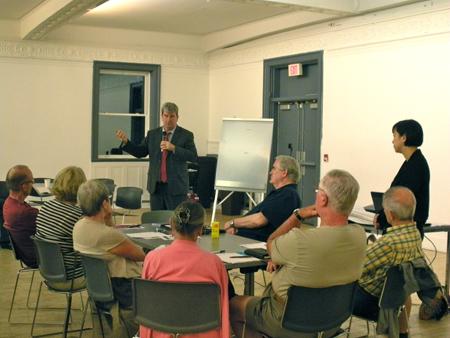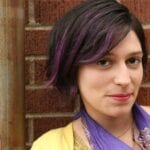In the fourth of a series of community planning meetings throughout Toronto Centre, Ward 27 Councillor Kristyn Wong-Tam and Toronto-Centre MPP Glen Murray called people together at the 519 Church Street Community Centre June 16 to discuss the Church-Wellesley Village.
Representatives from local neighbourhood associations, the Church-Wellesley Business Improvement Area and Ryerson University spoke about ways to make the Village a better space. Murray described the event as a “seamless experience” between provincial and municipal government, allowing community members to share ideas for the future of the neighbourhood.
Murray said the meetings stemmed from a realization that “we’re usually coming out for a negative proposition… What we’re trying to do is turn that around.
“Often we feel like things are happening to us or being done to us,” Murray said. For example, over the past year, at least two condo developers have announced plans for large developments in the area without prior consultation with residents.
“What do you want to protect and what do you want to change?” asked Murray.
The attendees, of which there were about 30, were mostly white and ranged from their early 30s to their late 70s. Frequently, attendees praised what they called the Church-Wellesley Village’s “diversity.”
Wong-Tam says that encouraging people from diverse communities to attend is “a struggle… that we’ve had with all the community planning meetings.”
There is “a sense of… cynicism within a certain group of people, whether or not they really have impact on local government…. This is not the last meeting we’re going to have,” she added. In “creating the type of space and adequacy of space and making sure people feel welcome,” people will be encouraged to join the conversation.
Although the views expressed by the attendees were wide-ranging, the words “family-friendly” and “safety” were echoed by all.
One working group suggested a greater police presence, including neighbourhood liaison officers, while another suggested that more community self-policing was in order.
Some expressed a desire to build more mixed and supportive housing in the neighbourhood; others expressed concerns about the proliferation of new buildings and high-rises.
Wong-Tam says the key is to “find balance.”
“There is no one single approach to keeping safety and security,” she said.
Because the meeting involved multiple levels of government, community issues were discussed not only in terms of city planning, but how other levels of government could offer support.
From a variety of tables, working groups emphasized the desire for the elimination of the Ontario Municipal Board, a provincial bureaucracy Wong-Tam describes as “a devastating upper-tier institution that overrides local planning decisions.”
Groups also spoke of their desire for deliberate long-term planning. Paul Farelly is involved in the Church-Wellesley Neighbourhood Association. He wants to see a “community plan” that will be “something to refer to in the face of the extreme densification that’s taking place.”
At the end of the meeting, Wong-Tam shared her own ideas for the community, including a councillor-initiated “Yonge St planning framework.” She says she is working with consultants Ken Greenburg and Marianne Mckenna on a proposal to “re-pedestrianize and revitalize Yonge Street… with the option of seasonal road closures to create a pedestrian mall, with the support of local businesses.”
Wong-Tam notes that while urban planning is important, it can be difficult when federal decisions about infrastructure remain unstable.
“At the end of the day, we don’t have an overall infrastructure plan because the federal government doesn’t have an infrastructure strategy,” Wong-Tam says.
MP Bob Rae was expected to join the meeting but did not attend. He could not be reached for comment.


 Why you can trust Xtra
Why you can trust Xtra


